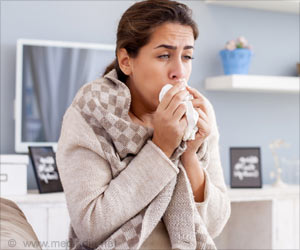Novel Coronavirus(2019-nCoV) is on the rise. Here are some simple safety tips to follow while traveling. Choosing a window seat and staying put while flying lowers your likelihood of encountering an infectious disease.

‘Novel Coronavirus(2019-nCoV) is on the rise. Choosing a window seat and staying put while flying lowers your likelihood of encountering an infectious disease.’





Here are few tips to keep in mind while //traveling:- All previous coronaviruses have transmitted through droplets
- So, it would be unusual if this new pathogen was different
- The new coronavirus is behaving much like SARS
- Both are zoonotic, started in animals before jumping to humans, and both appear to have started in bats
- The pair also transmit from human to human and have a long incubation period—up to 14 days for the Wuhan coronavirus, compared to about two for influenza—which means that people might be sick and transmitting the disease before symptoms show up
- Follow CDC guidance for infectious diseases when you’re on an airplane: Washing your hands with regular soap or using an alcohol-based hand sanitizer after touching any surface—especially since there’s evidence that coronaviruses last longer on surfaces than other illnesses, around three to 12 hours. You should also avoid touching your face and contact with coughing passengers by whatever means possible
- When an infected person coughs or sneezes, they shed droplets of saliva, mucus, or other bodily fluids. If any of those droplets fall on a person or if you touch them and then, say, touch your face you can become infected as well. These droplets are not affected by air flowing through a space, but instead fall close to where they originate
- The hospital’s guidelines for influenza define exposure as being within six feet of an infected person for 10 minutes or longer Respiratory illnesses can also be spread through the surfaces upon which the droplets land, like airplane seats and tray tables
- Respiratory viruses can be transmitted through the air in tiny, dry particles known as aerosols. But, it’s not the major mechanism of transmission. Viruses would rather be moist, and many fades from being infectious if left dry for too long
- The WHO defines contact with an infected person as being seated within two rows of one another. But people don’t just sit during flights, particularly ones lasting longer than a few hours. They visit the bathroom, stretch their legs, and grab items from the overhead bins. 38 percent of passengers leave their seats once and 24 percent more than once. Another 38 percent of people stay in their seats throughout the entire flight
- The passengers are least likely to get up were in window seats: only 43 percent moved around as opposed to 80 percent of people seated on the aisle. Window seat passengers have far fewer close encounters than people in other seats, averaging 12 contacts compared to the 58 and 64 respective contacts for passengers in middle and aisle seats
- Choosing a window seat and staying put clearly lowers your likelihood of encountering an infectious disease
- Passengers in middle and aisle seats—even those that are within the WHO’s two-seat range also have a low probability of getting infected. Because most contact people have on airplanes is relatively short
- But if the crew member is infected as they spend much more time walking down the aisle and interacting with passengers, they are more likely to have additional—and longer—close encounters
- A sick crew member has a probability of infecting 4.6 passengers; thus it is imperative that flight attendants not fly when they are ill
What’s Worse, the Coronavirus or Influenza?
The reproduction number—R0 or “r naught”—simply refers to the number of additional people that an infected person typically makes sick. Transmissibility rate for the new coronavirus ranging from 2.0 to 3.1 people. That’s higher than influenza—1.3 to 1.8—but like SARS, which has a basic reproduction number in the 2 to 4 range. So, coronaviruses are slightly more prone to spreading between people.
The case-fatality ratio—or death-to-case ratio—is the number of people killed by disease divided by the number of people who catch it. Seasonal influenza, despite being considered a global scourge, technically kills a relatively small proportion of its cases, with a case-fatality ratio around 0.1 percent.
SARS had a case-fatality rate of 10 percent and the rate for the new coronavirus is currently near 3 percent, which is on par with the 1918 Spanish influenza pandemic.
Advertisement
Source-Medindia








